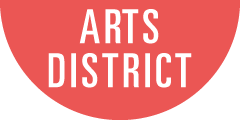How to Be Here- Gallery 201 Art Exhibit
“How to Be Here”
Works by Amanda DiGiovanni and Helena Westra
Curated by The Hill Street Country Club
Opening Reception August 1, 2025, 4-7 PM
Gallery 201 | Arts District Liberty Station
Curated by Arts District Liberty Station’s David G.Fleet Curator-in-Residence team, The Hill Street Country Club with lead curator Dinah Poellnitz, the new exhibit at Gallery 201 brings together two artists working with found materials, sculptural interventions and personal archives to explore what it means to be present and just be – despite pain, outcry and systemic collapse. It takes viewers through the dynamic feelings and emotions of survival, how it can be vulnerable, circular, and quiet but also creative. Their work asks us not simply how we go on, but how we stay here, as full, flawed, feeling humans.
About the artists:
Amanda DiGiovanni, is a San Diego-born multimedia artist whose practice blends sculpture, performance, and photography into immersive, thought-provoking experiences. Her work examines what it means to be human in a constantly shifting world while consistently pushing artistic boundaries and expressions. Amanda DiGiovanni offers an unfiltered, intuitive exploration of mental health’s inner landscape. Incorporating wire, discarded medication bottles, and fractured sculptural elements, her pieces spotlight the lingering marks of survival. Her installations embody memory, grief, and societal stigma, translating the often-clinical language of psychiatric care into a compelling visual vocabulary of truth and resilience. Whether evoking neural networks or gestures of self-comfort, Amanda's work challenges us to reconsider mental illness not as a deviation, but as an intrinsic part of the emotional spectrum of being human.
Helena Westra, who works with earthy materials like clay, dirt and found materials, creates sculptures and land art that speak to ancient symbols and archetypes. Blending land art with spiritual and symbolic themes, her sculptures explore archetypes and the human connection to nature. With this background, her portion of the joint exhibit emerges from the physical body, its cycles, limitations, and landscapes. Navigating the constraints of limited ceramic studio access, Helena turns to unconventional materials such as discarded furniture, sanitary pads, fabric, and domestic textures to construct her forms. Her sculptures become tender monuments to fatigue, restoration, and reclamation. Through the use of symbolic elements including plastered garments, cushioned seating designed for ovulating bodies, and pink chainsaws, she confronts the silencing of women's pain, reframing rest not as passivity but as an act of radical resistance.
Cost
FREE
Dates and Times for this Past Event
- Monday, Nov 3, 2025 8am - 8pm
- Sunday, Nov 2, 2025 8am - 8pm
- Saturday, Nov 1, 2025 8am - 8pm
- Friday, Oct 31, 2025 8am - 8pm
- Thursday, Oct 30, 2025 8am - 8pm
- Wednesday, Oct 29, 2025 8am - 8pm
- Tuesday, Oct 28, 2025 8am - 8pm
- Monday, Oct 27, 2025 8am - 8pm
- Sunday, Oct 26, 2025 8am - 8pm
- Saturday, Oct 25, 2025 8am - 8pm
- Friday, Oct 24, 2025 8am - 8pm
- Thursday, Oct 23, 2025 8am - 8pm
Location
Gallery 201
2820 Roosevelt Rd

